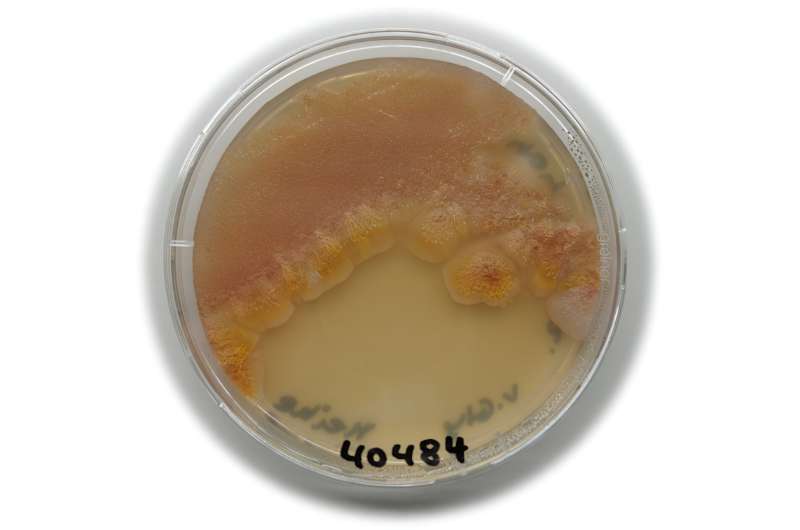This article has been reviewed according to Science X's editorial process and policies. Editors have highlighted the following attributes while ensuring the content's credibility:
fact-checked
proofread
Bacterial research: Novel antibiotic producers discovered in German collection

Researchers at the Leibniz Institute DSMZ-German Collection of Microorganisms and Cell Cultures, led by Dr. Yvonne Mast and Dr. Imen Nouioui, have published scientific descriptions for five new antibiotic-producing bacteria.
Using state-of-the-art technologies to examine strains that have been in the collection for more than 40 years, the researchers discovered the microbes' ability to produce antibiotics. The findings have been published in Frontiers in Bioengineering and Biotechnology.
Modern analyses lead to new discoveries
At the DSMZ culture collection, microbial diversity is preserved and serves as an invaluable source for the identification of products that are medically and biotechnologically important. Each microorganism is analyzed in detail before it is added to the collection, with researchers documenting their characteristics. Thanks to modern analyses, it is possible to discover properties of deposited microbes that previously would have remained unrecognized, like in the case of the five Streptomyces strains that have now been examined.
Streptomycetes are well-known producers of bioactive compounds that produce the majority of antibiotics in use today. "Our research underlines the importance of collecting biological resources for science, as the use of new technologies can further increase the value of 'old bioresources,'" explains Mast.
In their study, the Braunschweig researchers identified five Streptomyces new species. In addition, genome mining was used to investigate whether these bacteria can produce antibiotics, which was experimentally verified for some of the strains. Mast adds, "These bacteria also possess numerous other biosynthetic gene clusters that bear little resemblance to already known gene clusters. This suggests that they could potentially produce novel natural products."
Bacteria named after Braunschweig-based DSMZ researchers
In the field of microbiology, microorganisms can be named after well-known individuals in order to honor their scientific work. The DSMZ researchers took this opportunity to name two of the five new species after distinguished German microbiologists who have a deep connection to the Leibniz Institute DSMZ.
Professor Dr. Erko Stackebrandt (namesake for Streptomyces stackebrandtii (DSM 40976T)) not only carried out significant research in the field of microbial taxonomy, but he also headed the DSMZ as scientific director from 1993 to 2010 and continued to work at the institute until 2017.
Another bacterium (Streptomyces kroppenstedtii (DSM 40484T) was named after Prof Dr. Reiner Maria Kroppenstedt, a microbiologist who worked at the DSMZ from 1979 to 2007, playing a key role in shaping the collection of actinobacteria.
More information: Imen Nouioui et al, Challenging old microbiological treasures for natural compound biosynthesis capacity, Frontiers in Bioengineering and Biotechnology (2024). DOI: 10.3389/fbioe.2024.1255151
Provided by Leibniz-Institut DSMZ-Deutsche Sammlung von Mikroorganismen und Zellkulturen GmbH




















